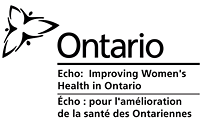 Chapter 1
Chapter 1
Introduction to the POWER Study
This chapter provides an overview of Volume 1, outlining the health issues being addressed and the collaborative research model developed to produce the Report. Also included is a brief introduction to the development and use of indicators for improving health.
 Chapter 2
Chapter 2
The POWER Study Framework
Included in this chapter is a description of the conceptual framework developed to provide context for the analyses used for the Report. Also described is the comprehensive process used to select the indicators to be reported on.
 Chapter 3
Chapter 3
Burden of Illness
This chapter provides a detailed analysis of the burden of illness (the overall health and well-being) of Ontarians, and how it varies depending on sex, socioeconomic status, and geographical area of residence. Up-to-date reporting is provided on the prevalence of chronic conditions among Ontarians (both women and men), their current health and functional status, their risk factors for chronic diseases, the incidence of sexually-transmitted infections, and causes and patterns of mortality.
 Chapter 4
Chapter 4
Cancer
Cancer is the second leading cause of death among Ontario women. In this chapter, we report on several of the most common forms of the disease, including cancers of the breast, reproductive system, and lung, as well as colorectal cancer. We also provide information on cancer incidence, survival rates, and end-of-life care; and include indicators that capture the continuum of cancer care (prevention, screening, treatment and follow-up).
 Chapter 5
Chapter 5
Depression
Depression is a major health concern for Canadian women, who are more likely to experience depression than men. Serious and/or untreated depression has a large influence on quality of life. In this chapter, we provide data on how well Ontario’s health care system currently meets the needs of women and men with depression.
 Chapter 6
Chapter 6
Cardiovascular Disease
Cardiovascular disease (CVD) is a leading cause of mortality and a major cause of disability for Ontario women. This chapter focuses on the three major types of CVD that affect both women and men in the province: ischemic heart disease, heart failure, and stroke. We provide information on the quality of life of women and men with CVD and wait times for cardiovascular procedures.
 Chapter 7
Chapter 7
Access to Health Care Services
Access to health care services continues to be an important issue for Ontarians in general and for women in particular. Lack of access to services can result in costly and potentially avoidable complications, increased morbidity (sickness), and reduced quality of life. In this chapter, we report on access to primary care, specialist care, and home care. We also provide information on rates of hospitalization for diabetes, asthma, and heart failure that might be improved through better access to effective outpatient care.


